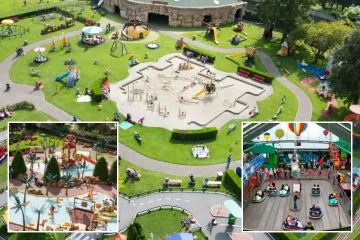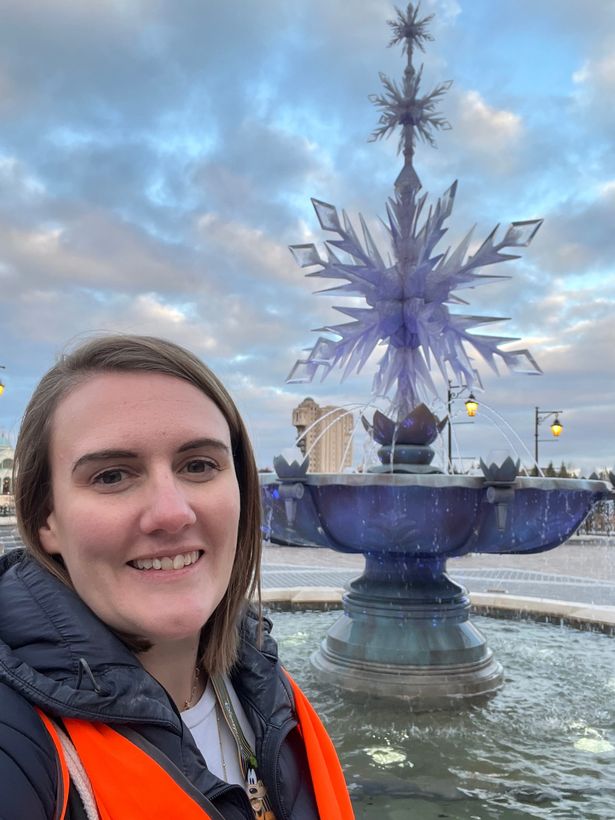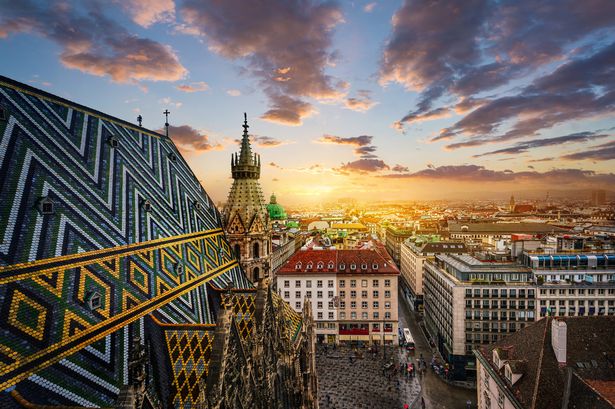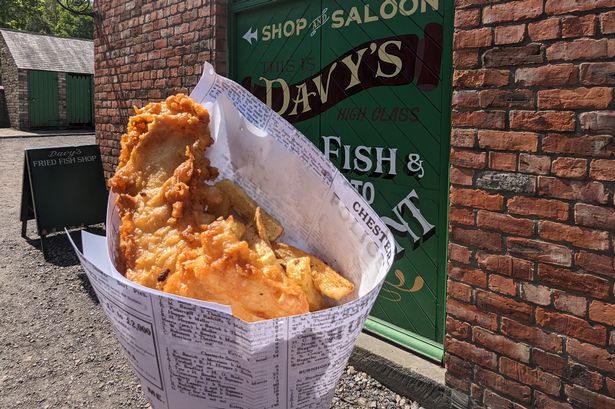Disneyland Paris has officially confirmed the opening date for its World of Frozen land in 2026 – and we got a sneak peek into the land where guests can meet Anna, Elsa, Olaf and more
Disneyland Paris has finally confirmed an opening date for its highly-anticipated World of Frozen land – and we’ve got an exclusive first look inside the Arendelle kingdom.
From March 29, 2026 , Disney fans will be able to explore the home of Anna and Elsa with a host of experiences including a brand new ride, character meet and greets, new shows and exclusive food and drink.
I was lucky enough to be one of the first to get a sneak peek at the new Frozen land in the Walt Disney Studios Park (which will rebrand as Disney Adventure World when the Frozen land also opens). From the moment you arrive, it’s clear that Frozen fans aren’t going to be disappointed.
As you walk up to the area, you can see a huge snowy mountain with Elsa’s ice palace visible in the distance, Nordic inspired buildings that look like the stuff of Instagram dreams, and pretty fountains with icicles because – well, it’s Frozen. I also spotted some Mickey-shaped detailing for those who like to search for hidden Mickeys in the park!
READ MORE: I went to Disney’s private island for a day – I wasn’t ready for what was on offer
As for the character meet and greets? There is a brand new little Olaf animatronic who you’ll be able to spot with the princesses; he’s absolutely adorable and kids are no doubt going to love him. It’s very impressive technology; he waddles around, talks and waves, and had everyone awwing and cheering as he wandered about, joined by Anna and Elsa. The Olaf animatronic is a first-of-its-kind in the world, and really brings the character to life especially when he interacts with the princesses.
If you want to meet the princesses, you’ll need to book a slot at the Arendelle castle – the perk being that you then can enjoy the rest of the park rather than waiting around for hours. The good news is that it won’t be the only character interaction available throughout the land. There’ll be chances to meet Oaken (‘Yoohoo, big summer blowout’), some of the adorable baby trolls, and villagers ready to share some quirky stories about life in Arendelle.
There will be a show occurring multiple times a day within the bay in the Frozen village including a float of boats led by Kristoff and Olaf, with a chance to spot the princesses as they wave to their guests from their own gorgeous boat. The 15-minute colourful show will include a chance for the audience to sing along with characters too, including iconic songs like ‘Let It Go’ or ‘Show Yourself’.
READ MORE: I’ve been on the Eurostar over 50 times – people always make the same mistake
Foodies, you won’t want to miss the abundance of snacks; at the Nordic Crowns Tavern you can create your own bowl for lunch/dinner including a base, protein, veg and sauce. Apparently, chefs went through 30 different types of mashed potato before they settled on the one that’s used in the restaurant. The restaurant will also include vegan and gluten-free options.
For those who fancy a tipple, The Regal View Restaurant & Lounge is the place to be. It’s so pretty with murals inspired by the princesses – and yes, you can book Character Dining to meet the princesses at the restaurant. The vibe is gorgeous florals, dark green furniture and heaps of nods to all of the princesses, not just Elsa and Anna. Meanwhile the lounge bar – a first for these parks – felt quite fancy for a theme park, especially with the impressive range of Kir Royale and Champagne cocktails on offer.
We didn’t get a sneak peek at the new ‘Frozen Ever After’ ride (it’s still under construction!), but it will involve a gentle boat ride taking families from a snowy forest to the Valley of the Trolls, through Elsa’s dazzling Ice Palace, before ending in Arendelle Bay lit by snowflake-shaped fireworks.
As for that all-important merchandise, one highlight has to be the adorable Rúna troll, at the Fjord View Shop. This little toy is a bit like a Furby, in that it interacts with you. The Runa can talk, it can be ‘put to sleep’ with rocking, and if you have more than one, it interacts with other toys. However, one of the coolest features is that if you carry it around the Frozen land, it will interact with specific ‘trigger points’ in the land, for example by fountains or certain buildings.
Anyone who buys one will be given a map to show you the areas where you can find these interactions, although you won’t be given the specific locations as part of the fun! These dolls will cost €70 each which didn’t feel wildly overpriced considering how much you can get out of the toy if you buy it before going around the land.
Frozen won’t be the only exciting attraction at Disney Adventure World. The theme park already boasts Marvel and Pixar inspired lands, and is set to undergo another expansion with a Lion King land over the next few years.
As you walk towards World of Frozen, you’ll get to enjoy two new adorable attractions; one swing-style carousel inspired by Up, and a teacups-esque ride inspired by Tangled.
Disney fans will also get to see a new nighttime show above the large Adventure World lake that offers a central point leading out to the lands; we got a sneak peek and it involves drones, pyrotechnics, fountains and some very impressive special effects, including nods to beloved films like Moana.
You can find out more on disneylandparis.com



















